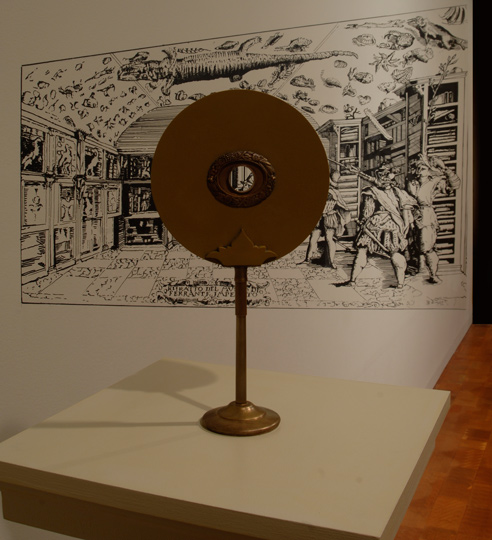Optical Devices
Cabinets of curiosities challenged human perception on all levels, often stimulating
and even upsetting the senses. A common part of these early collections were optical
devices and illusions originally developed by Renaissance Italian artists, including
Leonardo da Vinci, as part of their experiments with perspective. Anamorphic
images – a term derived from the Greek for “transformation” – were stretched
in various ways according to precise mathematical formulas. These strange lines
and blobs of color were unintelligible except from particular vantage points where
the image would snap into view to reveal meaningful and often humorous or
surprising pictures. By the seventeenth and eighteenth centuries, anamorphic
images had become useful tools for teaching math but also amusing parlor tricks.
The specially mounted viewer in this room allows you to see the stretched-out black and white wall image in its original form.
